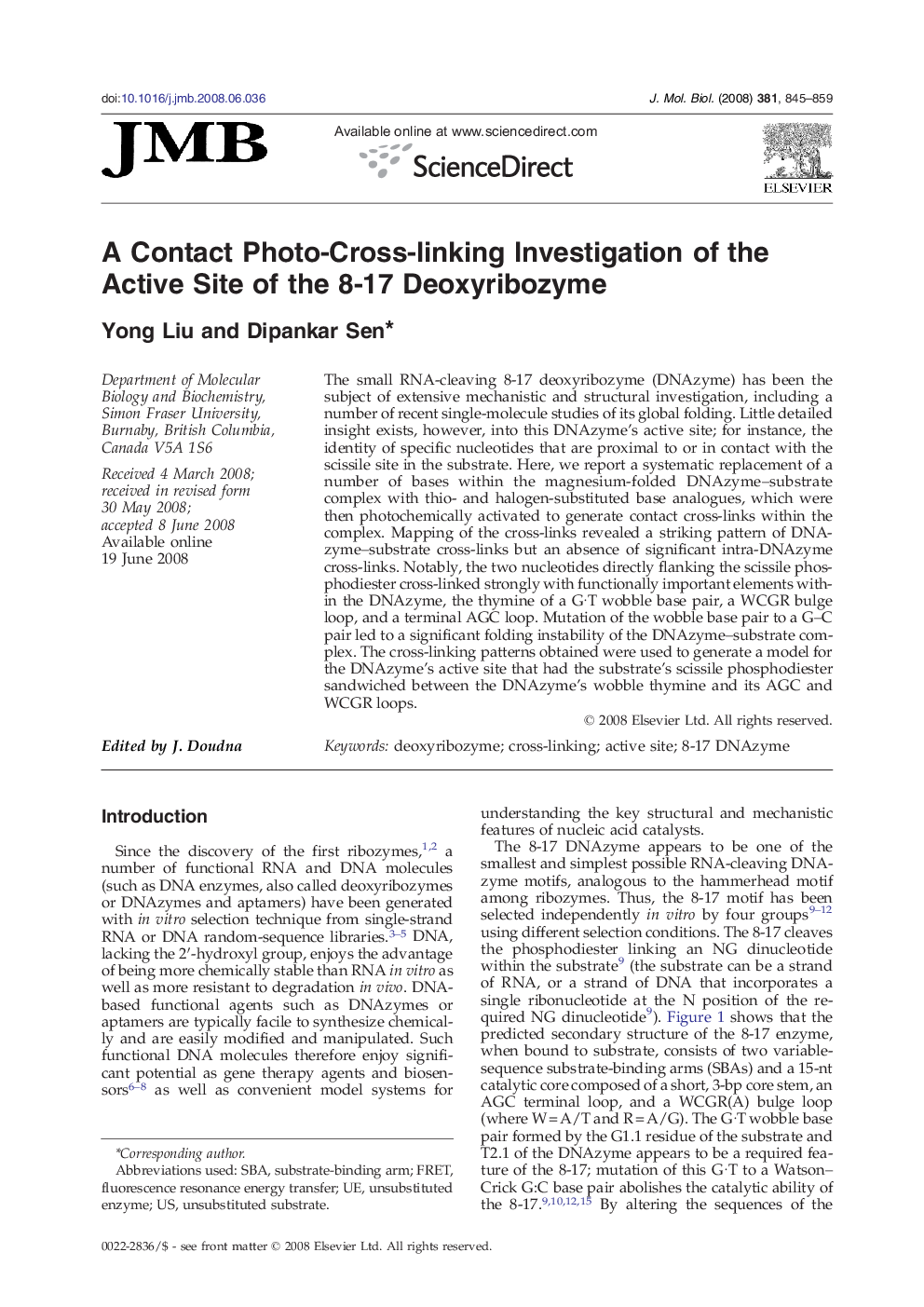| Article ID | Journal | Published Year | Pages | File Type |
|---|---|---|---|---|
| 2187074 | Journal of Molecular Biology | 2008 | 15 Pages |
The small RNA-cleaving 8-17 deoxyribozyme (DNAzyme) has been the subject of extensive mechanistic and structural investigation, including a number of recent single-molecule studies of its global folding. Little detailed insight exists, however, into this DNAzyme's active site; for instance, the identity of specific nucleotides that are proximal to or in contact with the scissile site in the substrate. Here, we report a systematic replacement of a number of bases within the magnesium-folded DNAzyme–substrate complex with thio- and halogen-substituted base analogues, which were then photochemically activated to generate contact cross-links within the complex. Mapping of the cross-links revealed a striking pattern of DNAzyme–substrate cross-links but an absence of significant intra-DNAzyme cross-links. Notably, the two nucleotides directly flanking the scissile phosphodiester cross-linked strongly with functionally important elements within the DNAzyme, the thymine of a G·T wobble base pair, a WCGR bulge loop, and a terminal AGC loop. Mutation of the wobble base pair to a G–C pair led to a significant folding instability of the DNAzyme–substrate complex. The cross-linking patterns obtained were used to generate a model for the DNAzyme's active site that had the substrate's scissile phosphodiester sandwiched between the DNAzyme's wobble thymine and its AGC and WCGR loops.
